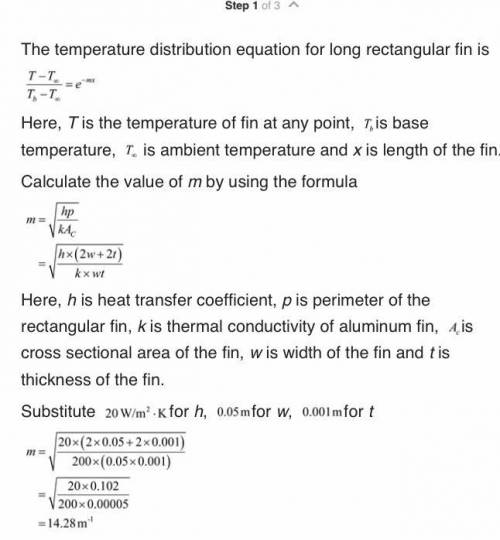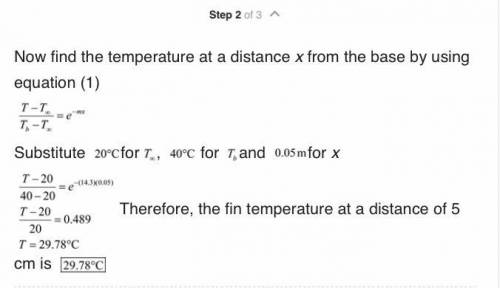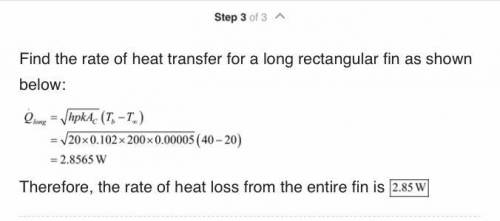
Engineering, 25.02.2020 05:17, abecobos37
Consider a very long rectangular fin attached to a flat surface such that the temperature at the end of the fin is essentially that of the surrounding air, i. e. 20°C. Its width is 5.0 cm; thickness is 1.0 mm; thermal conductivity is 200 W/m·K; and base temperature is 40°C. The heat transfer coefficient is 20 W/m2 ·K. Estimate the fin temperature at a distance of 5.0 cm from the base and the rate of heat loss from the entire fin.

Answers: 3
Other questions on the subject: Engineering


Engineering, 04.07.2019 18:10, redrosesxx
Water at 55c flows across a flat plate whose surface temperature is held constant at 95c. if the temperature gradient at the plate's surface for a given value of x is 18 c/mm, find a) local heat transfer coefficient. b) heat flux
Answers: 3

Engineering, 04.07.2019 18:20, hayleymckee
Steam enters a converging nozzle at 3.0 mpa and 500°c with a at 1.8 mpa. for a nozzle exit area of 32 cm2, determine the exit velocity, mass flow rate, and exit mach number if the nozzle: negligible velocity, and it exits (a) is isentropic (b) has an efficiency of 94 percent
Answers: 2
Do you know the correct answer?
Consider a very long rectangular fin attached to a flat surface such that the temperature at the end...
Questions in other subjects:



Advanced Placement (AP), 18.10.2019 01:00




Mathematics, 18.10.2019 01:00


Geography, 18.10.2019 01:00









